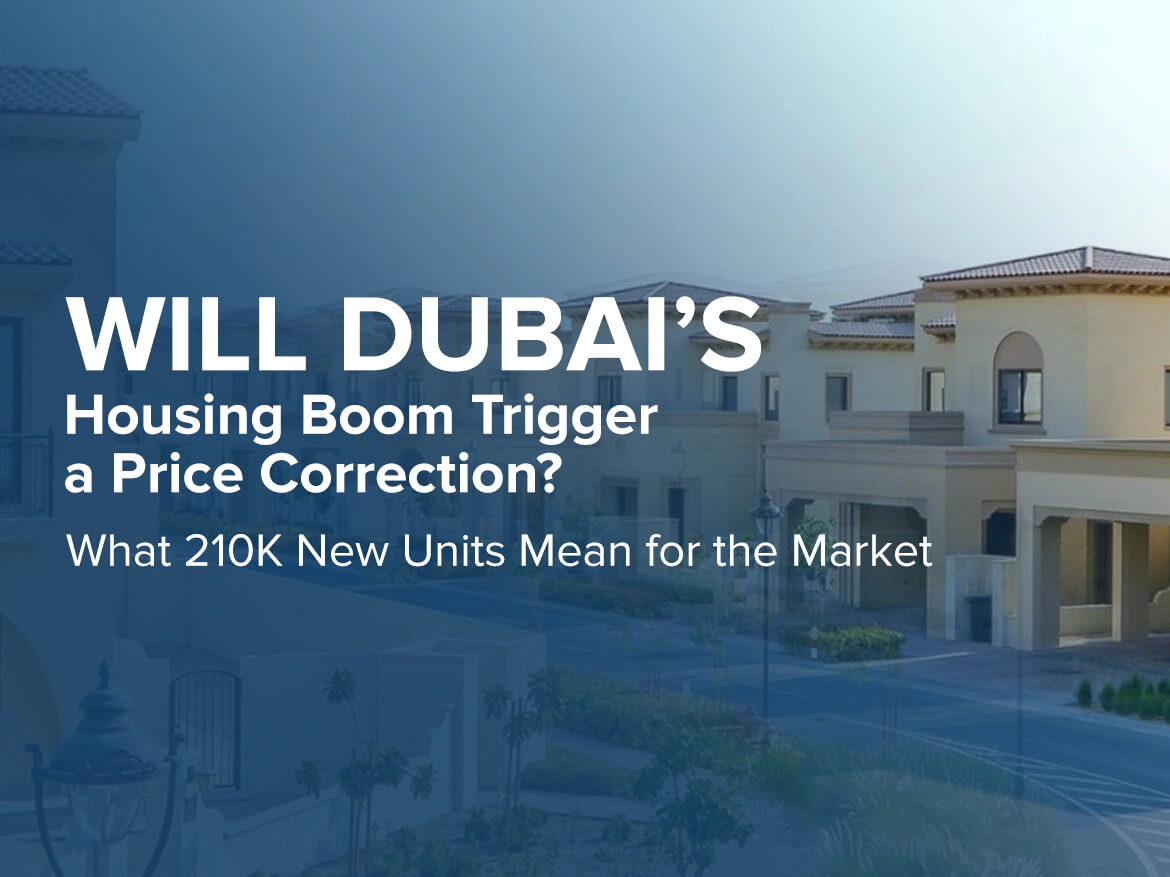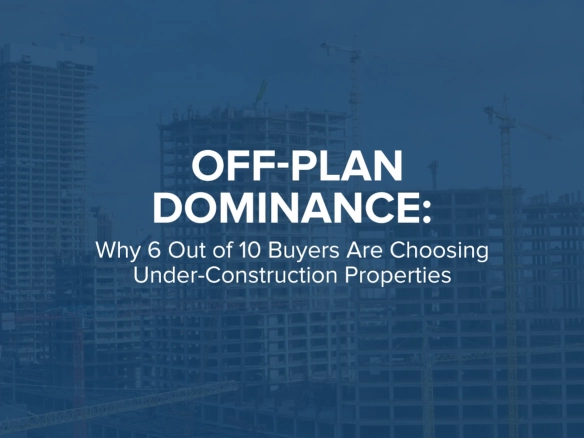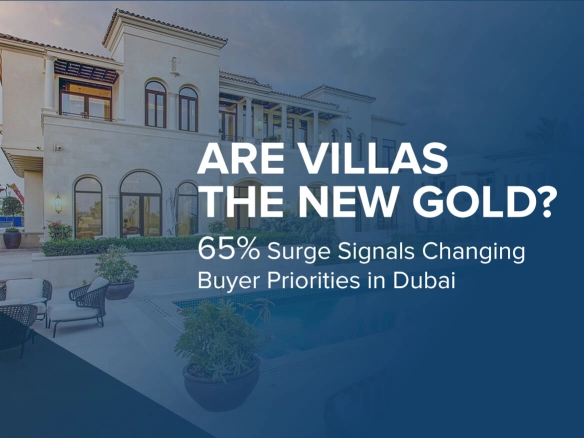Dubai’s property market has been on a remarkable upward trajectory for several years, breaking transaction records and drawing attention from global investors and residents alike. But as the skyline stretches further and the cranes keep moving, a new question is gaining momentum—could the current boom be followed by a price correction?
Between now and 2026, Dubai is expected to deliver over 210,000 new residential units, with nearly 90,000 of those planned for completion in 2025 alone. This is one of the most aggressive supply expansions the city has seen in recent years. And with that scale of development comes the natural concern — will more supply soften prices?
Some analysts believe a moderate correction is not only likely but also healthy. After more than 50% price growth in just under three years, a cooling-off period could help the market recalibrate. This isn’t about a crash. It’s about a shift from hypergrowth to measured maturity.
Interestingly, this shift is already starting to show. January 2025 marked one of the first months where prices dipped slightly across some sectors — not a dramatic fall, but a sign of balance returning. The mood in the market is steady, not panicked. Most industry voices agree that even if prices adjust by 10 to 15 percent over the next year, Dubai’s real estate fundamentals remain strong.
It’s also important to consider how this supply is distributed. Much of the upcoming inventory is concentrated in mid-market apartment communities, which are likely to feel the pressure first. On the other hand, prime and luxury segments — such as beachfront villas and branded residences — are expected to hold their ground, backed by limited availability and consistent demand from high-net-worth buyers.
From a buyer’s perspective, this could be a moment of opportunity. A market correction creates a window for those who’ve been waiting on the sidelines. Lower entry points, better payment terms, and increased developer flexibility may all be on the table. For investors focused on rental yield, initial price adjustments could actually improve ROI potential, especially as Dubai’s population growth continues to rise and demand for rentals remains high.
At USN Properties, we see this phase not as a setback, but as a sign of a more balanced and resilient market. This is when real strategy matters. It’s no longer just about timing — it’s about choosing the right product, the right developer, and the right long-term plan.
The smart move now? Be informed, stay patient, and don’t follow the noise. Dubai’s housing market is evolving, but the city’s appeal remains unchanged — stable, tax-friendly, and globally desirable.
Whether you’re looking to buy, invest, or simply understand what’s coming next, we’re here to help you navigate every step.
Between now and 2026, Dubai is expected to deliver over 210,000 new residential units, with nearly 90,000 of those planned for completion in 2025 alone. This is one of the most aggressive supply expansions the city has seen in recent years. And with that scale of development comes the natural concern — will more supply soften prices?
Some analysts believe a moderate correction is not only likely but also healthy. After more than 50% price growth in just under three years, a cooling-off period could help the market recalibrate. This isn’t about a crash. It’s about a shift from hypergrowth to measured maturity.
Interestingly, this shift is already starting to show. January 2025 marked one of the first months where prices dipped slightly across some sectors — not a dramatic fall, but a sign of balance returning. The mood in the market is steady, not panicked. Most industry voices agree that even if prices adjust by 10 to 15 percent over the next year, Dubai’s real estate fundamentals remain strong.
It’s also important to consider how this supply is distributed. Much of the upcoming inventory is concentrated in mid-market apartment communities, which are likely to feel the pressure first. On the other hand, prime and luxury segments — such as beachfront villas and branded residences — are expected to hold their ground, backed by limited availability and consistent demand from high-net-worth buyers.
From a buyer’s perspective, this could be a moment of opportunity. A market correction creates a window for those who’ve been waiting on the sidelines. Lower entry points, better payment terms, and increased developer flexibility may all be on the table. For investors focused on rental yield, initial price adjustments could actually improve ROI potential, especially as Dubai’s population growth continues to rise and demand for rentals remains high.
At USN Properties, we see this phase not as a setback, but as a sign of a more balanced and resilient market. This is when real strategy matters. It’s no longer just about timing — it’s about choosing the right product, the right developer, and the right long-term plan.
The smart move now? Be informed, stay patient, and don’t follow the noise. Dubai’s housing market is evolving, but the city’s appeal remains unchanged — stable, tax-friendly, and globally desirable.
Whether you’re looking to buy, invest, or simply understand what’s coming next, we’re here to help you navigate every step.





Join The Discussion